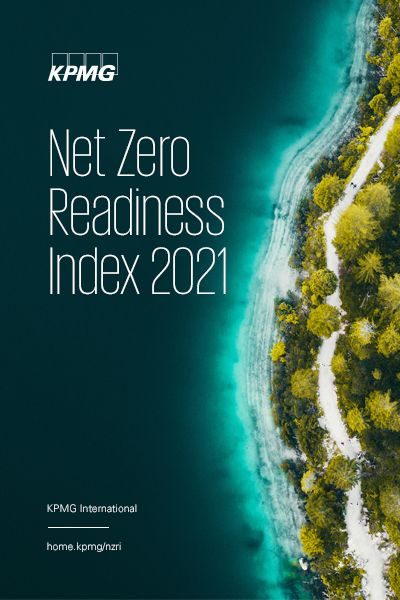Brazil plans to become climate neutral by 2060. It makes strong use of hydropower and is developing other reliable renewable energy sources, but deforestation and forest fires are strongly limiting its ability to reach Net Zero.
Developing renewable capacity
For decades, Brazil has made extensive use of hydroelectric power for electricity. This gives it a head start on the road to Net Zero, which its government plans to meet by 2060 with an interim reduction of 43 percent on 2005 levels by 2030.1 However Manuel Fernandes, Energy and Natural Resources Co-Lead for the Americas, KPMG in Brazil, says that the country is working to diversify its green energy sources, given the massive land requirements of hydroelectric reservoirs and their unreliability in dry seasons.
Norwegian energy group Equinor, which has been involved in oil and gas exploration and production in Brazil for 2 decades, made Brazil the site of its first solar energy farm which opened in 20182 and has applied to build an offshore wind farm near Rio de Janeiro.3 In March 2021, hydrogen energy company Enegix announced it would build the world’s largest green hydrogen plant in Ceara in Brazil, which will use solar and onshore wind to create hydrogen.4 But the country is also likely to continue to exploit its oil reserves along with natural gas as a cleaner interim option. “We cannot give up fossil fuels until we have trusted sources of renewables,” Fernandes says.

Deforestation and carbon sink opportunity
Brazil relies economically on agribusiness and is working to adopt technology that would reduce its emissions. However, such work is undermined by deforestation and wildfires in recent years across the Amazon rainforest, which are hugely detrimental to the country’s ability to reach Net Zero. A study published in the scientific journal Nature in April 2021, found that some areas of the world’s largest tropical forest are net emitters of carbon dioxide due to tree loss, and that the Amazon region was a net contributor to climate change between 2010 and 2018.5 Resulting lower precipitation levels are leading to higher prices of electricity from hydropower, leaving the country to rely increasingly on liquid natural gas imports. Brazil could see commercial as well as environmental benefits, if it reversed course and undertook significant afforestation and reforestation to sequester CO2 in carbon sinks.
Sectoral transformation
Brazil performs relatively well on transport where it is rated 12th of the countries in the NZRI, partly due to relatively low emissions per person, low-carbon fuel mandates and obligations to blend biofuels with standard vehicle fuels.

The country mainly uses sugarcane to produce ethanol and soybeans for biodiesel, and around 70 percent of gasoline vehicles can run on ethanol alone.6 However, growing the crops for biofuels has been linked to deforestation. Another issue is that many trucks, which the country relies on for freight, use diesel and more investment will be needed to change this, Fernandes says.
There are significant challenges for businesses in Brazil given its reliance on energy-intensive sectors. Many companies are making commitments to reduce emissions, but while some including Brazilian mining group Vale have detailed plans – in its case to become carbon neutral by 2050, partly through the use of an internal carbon price7 – others are less clear. “These commitments from big companies are important, but we still need to see much more detail on how they are doing this,” Fernandes adds.
Argentina | Australia | Canada | Chile | China | Denmark | France | Germany | Hungary | India | Indonesia | Italy | Japan | Malaysia |
Mexico | New Zealand | Nigeria | Norway | Poland | Russia | Saudi Arabia | Singapore | South Africa | South Korea | Spain | Sweden | Thailand |
Turkey | United Arab Emirates | United Kingdom | United States
1 Marcelo Teixeira, ‘Brazil carbon emissions rise despite deep recession – researchers’, Reuters, 26 October 2016. https://www.reuters.com/article/brazil-climatechange-carbon-idUSL8N1CW75V
2 ‘Brazil’, Equinor, accessed July 2021. https://www.equinor.com/en/where-we-are/brazil.html
3 Nadja Skopljak, ‘Equinor takes first offshore wind step in Brazil’, Offshorewind.biz, 24 August 2020. https://www.offshorewind.biz/2020/08/24/equinor-takes-first-offshore-wind-step-in-brazil/
4 'Enegix Energy to build US$5.4 billion green hydrogen facility in Brazil', Enegix, 1 March 2021. https://pressroom.enegix.energy/129246-enegix-energy-to-build-us54-billion-green-hydrogen-facility-in-brazil
5 Matt McGrath, 'Climate change: Amazon regions emit more carbon than they absorb', BBC, 14 July 2021. https://www.bbc.co.uk/news/science-environment-57839364
6 ‘How competitive is biofuel production in Brazil and the United States?’, International Energy Agency, 11 March 2019. https://www.iea.org/articles/how-competitive-is-biofuel-production-in-brazil-and-the-united-states
7 ‘Climate change’, Vale, accessed July 2021. http://www.vale.com/esg/en/Pages/ClimateChange.aspx




